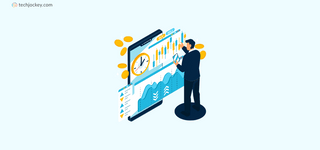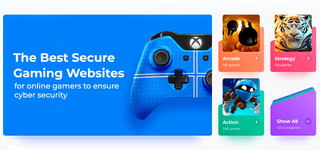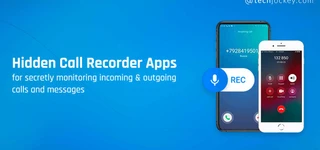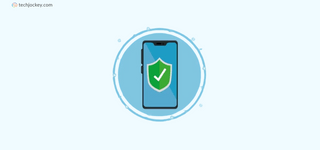7 Best Attack Surface Management Tools for Risk Reduction
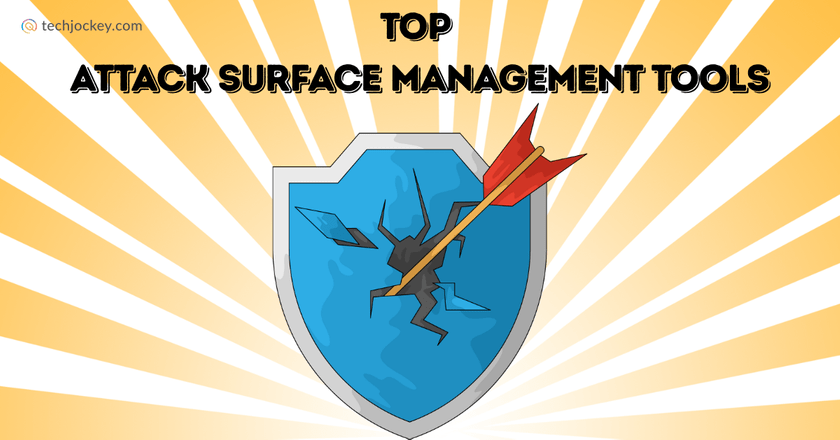
Did you know cyberattacks hit a business every 39 seconds? That’s right. Every minute counts when it comes to security. Your company’s digital footprint, basically the sites, apps, devices, and servers connected to the web, as such, can be a goldmine for hackers if not managed carefully. The bigger it gets, the more chances for intruders to sneak in.
However, with attack surface management tools, you can scan it to spot gaps before hackers do. Acting as your security guards, these tools patrol your network, cloud assets, and third-party links 24/7.
Let us thus walk you through some of the leading attack surface monitoring tools that will help you keep your digital trail a secret, come what may.
What are Attack Surface Management Tools?
An attack surface management tool is a cybersecurity software that tracks every part of your network exposed to potential attacks. It continuously scans your digital exterior to spot vulnerabilities, guide fixes, and improve your defence posture.
While some tools focus on internal systems, others look beyond, inspecting external assets and third-party risks. Those covering external threats are often called external attack surface management (EASM) tools. They provide a view of your attack surface from a hacker’s point of view. In short, these tools help you spot and manage risks that slip past traditional security setups.
Comparison of Leading Attack Surface Management Tools
Use this table to quickly compare features, risk coverage, integrations, and suitability of the top attack surface management tools for your organization.
| Tool | Key Features | Best For |
|---|---|---|
| Microsoft Defender EASM | Asset Discovery: Yes Risk Prioritization: Yes Third-Party Risk: Moderate Integrations: Microsoft Security Suite | Microsoft-heavy environments |
| CyCognito | Asset Discovery: Extensive Risk Prioritization: Yes Third-Party Risk: Yes Integrations: Various | Large enterprises with shadow IT |
| CrowdStrike Falcon Surface | Asset Discovery: Yes Risk Prioritization: AI-powered Third-Party Risk: Yes Integrations: CrowdStrike platform | Existing CrowdStrike customers |
| Tenable Attack Surface Management | Asset Discovery: Yes Risk Prioritization: Business-context Third-Party Risk: Limited Integrations: Tenable.io | Vulnerability-focused firms |
| BitSight | Asset Discovery: No Risk Prioritization: External Risk Third-Party Risk: Yes Integrations: Risk management tools | Vendor risk management |
| UpGuard | Asset Discovery: Yes Risk Prioritization: Risk scoring Third-Party Risk: Yes Integrations: Various | Digital risk and vendor security |
| Palo Alto Networks Cortex Xpanse | Asset Discovery: Yes Risk Prioritization: Attack path focus Third-Party Risk: Moderate Integrations: Palo Alto Security products | Large enterprises, compliance |
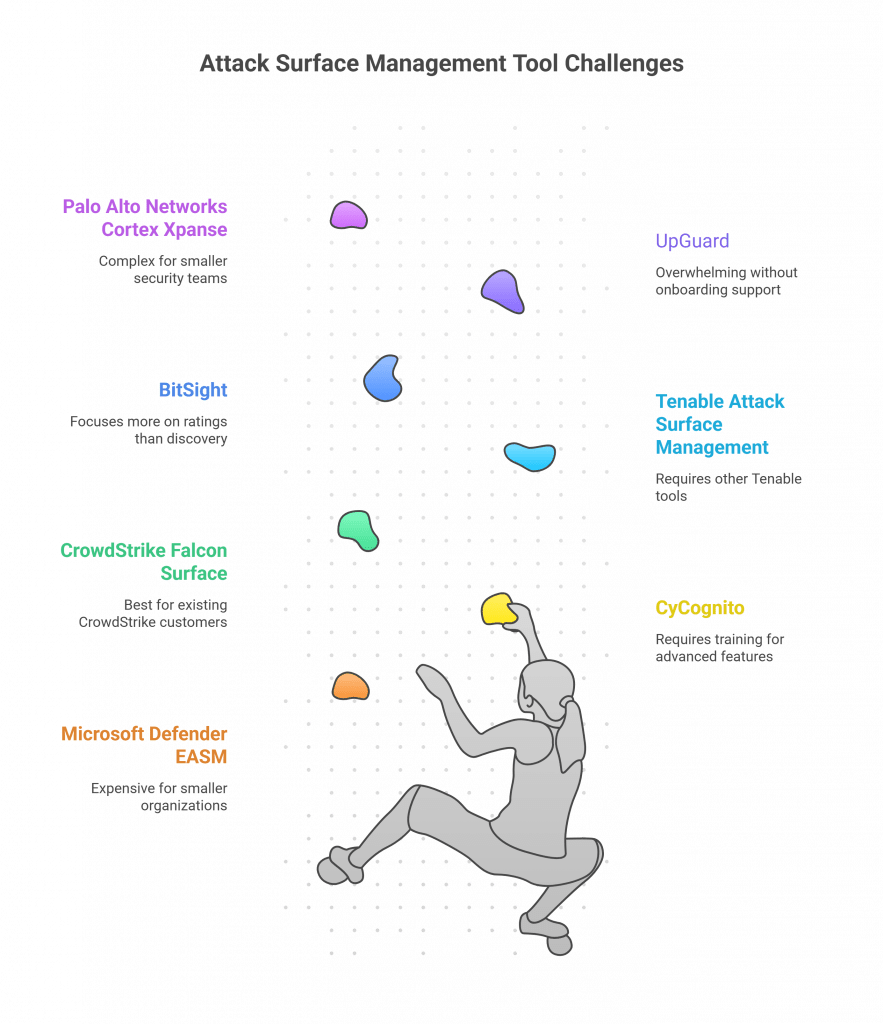
7 Best Attack Surface Management Tools In 2025
We have listed the top 7 attack surface management platforms below for your understanding and convenience…
1. Microsoft Defender External Attack Surface Management (EASM)
Microsoft Defender EASM scans your organization’s external digital footprint. It discovers, monitors, and analyzes your public-facing assets to find unknown or exposed systems. Its integration with Microsoft 365 Defender allows smooth risk prioritization and swift remediation, making it a solid choice for organizations looking for a unified security experience.
Key Features of Microsoft Defender External Attack Surface Management (EASM):
- Discovers external-facing assets continuously
- Uses global internet scanning to find unknown assets
- Provides threat intelligence to detect vulnerabilities
- Scores exposures to help prioritize risks
- Connects with Microsoft Defender and Sentinel
- Supports asset tagging, filtering, and classification
- Enables natural language queries via Security Copilot
- Extends visibility to third-party and partner assets
Pros
- Integrates easily with Microsoft’s security tools
- Sends automated alerts with detailed insights
- Protects cloud and hybrid workloads effectively
- Helps discover shadow IT and unmanaged assets
Cons
- Can be expensive for smaller organizations
- Requires Azure and Microsoft ecosystem knowledge
- Charges per asset per day, which can add up
Microsoft Defender External Attack Surface Management (EASM) Pricing & Plans: Price on request
2. CyCognito
CyCognito provides a hacker’s eye view of your entire attack surface. It finds hidden, unknown assets across cloud, network, and even shadow IT environments. Its risk-based approach helps you fix what matters most by grouping risks by attack paths.
Key Features of CyCognito:
- Discovers unknown and unmanaged external assets automatically
- Prioritizes exposure risks using threat intelligence and business context
- Models attack paths to show how threats can move through systems
- Provides third-party and subsidiary risk insights
- Tests assets continuously with active security testing (DAST, pen testing)
- Contextualizes assets by ownership, business value, and risk level
- Accelerates remediation with clear guidance and validation checks
Pros
- Covers a wide range of assets, including shadow IT and cloud services
- Visualizes attack chains clearly for better understanding
- Offers intuitive dashboards
- Reduces alert fatigue by focusing on critical risks
Cons
- Requires some training to use advanced features effectively
- Charges premium pricing for full feature access
CyCognito Pricing & Plans: Price on request
3. CrowdStrike Falcon Surface
CrowdStrike Falcon Surface is one of the leading attack surface management tools that offers continuous attack surface visibility combined with threat intelligence. It leverages AI to detect vulnerabilities across external assets and monitors risks linked to your supply chain.
Key Features of CrowdStrike Falcon Surface:
- Monitors internet-facing assets in real time
- Uses AI to detect threats with high accuracy
- Analyzes supply chain risks and third-party exposures
- Integrates with the broader CrowdStrike Falcon platform
- Classifies and scores risks using adversary intelligence
- Provides guided remediation for exposed assets
- Scans the global internet 24/7 using proprietary mapping
Pros
- Delivers strong AI-powered threat detection
- Works with Falcon endpoint protection
- Monitors third-party and subsidiary risks effectively
- Visualizes attack paths with business context
- Offers a 15-day free trial
Cons
- Is best suited for existing CrowdStrike customers
- Requires higher investment for full capabilities
CrowdStrike Falcon Surface Pricing & Plans: Price on request
4. Tenable Attack Surface Management
Tenable Attack Surface Management scans both internal and external assets continuously to expose vulnerabilities. It highlights exploitable weaknesses and provides prioritized remediation recommendations to improve your security.
Key Features of Tenable Attack Surface Management:
- Discovers internet-facing assets using global scanning
- Assesses vulnerabilities continuously across the external surface
- Prioritizes risks using business context and metadata
- Integrates with Tenable.io, Tenable One, and Security Center
- Maps over 5 billion assets for unmatched visibility
- Tags and filters assets for better inventory control
- Alerts on changes in your attack surface in real time
Pros
- Builds on Tenable’s strong vulnerability management foundation
- Simplifies remediation with guided workflows
- Maintains a comprehensive and dynamic asset inventory
- Supports integrations with AWS, Azure, GCP, and more
Cons
- Requires other Tenable tools for full functionality
- Has a moderate learning curve for new users
- Limits visibility without full Tenable One integration
Tenable Attack Surface Management Pricing & Plans: Price on request
5. BitSight
BitSight is an attack surface monitoring tool that specializes in rating your organization’s cybersecurity performance. It scores how well you reduce risk based on external signals. This tool is known for third-party risk evaluation, helping companies vet partners and suppliers effectively.

Bitsight
Starting Price
Price on Request
Key Features of BitSight:
- Provides cybersecurity ratings based on external data
- Supports benchmarking against industry peers
- Monitors third-party and fourth-party risks continuously
- Integrates with GRC, SIEM, and procurement tools like ServiceNow, Splunk, and SAP Ariba
- Offers real-time alerts on vendor security posture changes
- Maps digital ecosystems and identifies shadow IT
- Enables automated assessments and evidence-based scoring
- Delivers insights from dark web and threat intelligence sources
Pros
- Simplifies vendor risk assessments with clear scores
- Benchmarks cybersecurity posture against industry standards
- Updates ratings daily for ongoing visibility
- Accelerates vendor onboarding with pre-built profiles
- Supports compliance with frameworks like NIST, ISO, and HIPAA
Cons
- Focuses more on ratings than deep asset discovery
- Lags in reflecting real-time changes in some cases
- Requires add-ons for advanced threat intelligence
- Can become costly as vendor count increases
BitSight Pricing & Plans: Price on request
6. UpGuard
UpGuard offers digital risk protection by assessing your attack surface and third-party exposure. It helps prevent data breaches through external scan coverage and cyber risk ratings.
Key Features of UpGuard:
- Discovers external assets and shadow IT
- Assesses vendor cybersecurity posture continuously
- Monitors for data breaches and leaked credentials
- Checks cloud configuration risks and vulnerabilities
- Integrates with tools like Jira, Slack, and ServiceNow
- Provides security ratings and risk scoring
- Supports automated security questionnaires and workflows
- Alerts on typosquatting and identity breaches
Pros
- Delivers clear and comprehensive risk scores
- Visualizes risk data with easy-to-use dashboards
- Focuses strongly on third-party and supply chain risk
- Automates assessments and reduces manual effort
Cons
- Can feel overwhelming without onboarding support
- Requires configuration for optimal use
UpGuard Pricing & Plans:
| Plan | Price |
|---|---|
| Free | 0 |
| Starter | 1599 USD/month |
| Professional | 3333 USD/month |
| Enterprise | Price on request |
| Breach Risk (ASM) | Starting from 250 USD/month |
7. Palo Alto Networks Cortex Xpanse
Cortex Xpanse offers continuous and automated attack surface management by mapping all internet-exposed assets and providing real-time risk monitoring. It combines asset discovery, security analysis, and exposure reduction in one platform, giving a clear, constantly updated view of gaps.
Key Features of Palo Alto Networks Cortex Xpanse:
- Maps global external assets using continuous internet-wide scanning
- Scores risks based on exposure type, severity, and exploitability
- Identifies attack paths using machine learning and threat modeling
- Supports compliance with frameworks like NIST, ISO, and SOC 2
- Automates remediation using built-in playbooks
- Integrates with Cortex XSOAR, XSIAM, and third-party tools
- Scans 500B+ ports and 4.3B IPv4 addresses multiple times daily
- Detects shadow IT, rogue cloud assets, and misconfigurations
Pros
- Automates discovery, scoring, and remediation with minimal manual input
- Analyzes attack paths in detail for faster triage
- Supports compliance and reporting with rich dashboards
- Improves M&A security assessments and cyber insurance readiness
Cons
- Can be complex for smaller security teams
- Its full feature access can be costly
Palo Alto Networks Cortex Xpanse Pricing & Plans: Price on request
Conclusion
Managing your attack surface is not something you can ignore. With cyber threats growing more daring by the minute, using an attack surface monitoring tool, in fact, is your only way to
spot risks and get fixes before trouble starts.
The abovementioned list of tools can thus be your saviours as they make your security stronger each day every day.
Yashika Aneja is a Senior Content Writer at Techjockey, with over 5 years of experience in content creation and management. From writing about normal everyday affairs to profound fact-based stories on wide-ranging themes, including environment, technology, education, politics, social media, travel, lifestyle so on and so forth, she... Read more



